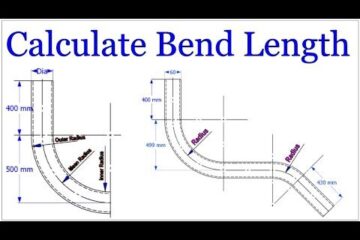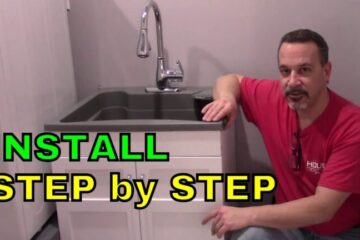In this informative article, you will discover a straightforward and efficient process to replace the water heater element in your recreational vehicle (RV). With a step-by-step guide, you can easily navigate through the ten simple actions required to complete this task. By following these clear instructions, you will be able to replace the water heater element in your RV without any unnecessary complications or frustrations. Keep reading to learn how to effortlessly ensure a constant supply of hot water during your adventures on the road.
Safety Precautions
Before you begin the process of replacing an RV water heater element, it is vital to prioritize safety precautions. The first step is to turn off the power supply to the water heater. This can be done by switching off the circuit breaker dedicated to the water heater in the RV’s electrical panel. Turning off the power ensures that you won’t encounter any electrical hazards during the replacement process.
Another safety precaution is to allow the water within the heater to cool down. Hot water can cause burns, so it is essential to give it enough time to cool to a safe temperature. This will minimize the risk of getting scalded while working on the water heater.
Additionally, gathering the necessary tools is crucial before starting the replacement process. Some essential tools include a wrench, pliers, Teflon tape, and a bucket to catch any water that may be drained from the water heater.
Draining the Water Heater
To begin the process of replacing an RV water heater element, you need to drain the water heater. This ensures that there is no water in the tank, which can create a messy situation during the replacement. Here are the steps to drain the water heater.
First, shut off the water supply to the water heater. This can usually be done by closing the valve located on the cold water inlet pipe leading to the water heater.
Next, open the pressure relief valve to relieve any built-up pressure within the tank. This valve is typically located on the top or side of the water heater and allows hot water and excess pressure to escape. Place a bucket beneath the valve to catch any water that may come out.
Once the pressure has been relieved, locate the drain valve on the water heater, usually located near the bottom. Attach a hose to the valve, directing the other end of the hose to a suitable drainage location. Open the valve, allowing the water to flow out of the tank. Ensure that the water is fully drained before proceeding to the next step.
Accessing the Water Heater Element
Once the water heater has been drained, you can now access the water heater element for replacement. Follow the steps below to access the element.
Start by locating the water heater within your RV. In most cases, the water heater is situated in a cabinet or an exterior compartment.
Next, remove the access panel that covers the water heater. The access panel is usually held in place by screws or clips. Use a screwdriver or pliers to loosen and remove any fasteners securing the panel.
After removing the access panel, you will be able to see the interior of the water heater. Look for the heating element and familiarize yourself with its location and appearance.
Disconnecting the Electrical Connections
Before removing the old water heater element, it is essential to disconnect the electrical connections to ensure your safety and avoid damage to the RV’s electrical system. Here’s how to do it.
Start by turning off the circuit breaker dedicated to the water heater in your RV’s electrical panel. This will prevent any electrical shocks or accidents while working with the electrical connections.
Next, carefully remove the wiring connected to the water heater element. Be cautious not to damage the wires or the connection points.
To ensure safety and prevent any accidental electrical contact, it is advisable to insulate the disconnected wires with electrical tape or wire nuts.
Removing the Old Water Heater Element
With the electrical connections safely disconnected, you can proceed to remove the old water heater element. Follow these steps for a successful removal.
Begin by locating the anode rod. The anode rod is typically located near the top of the water heater tank and may need to be removed to access the element. Refer to your water heater’s manual for specific instructions on removing the anode rod.
Next, drain any remaining water within the water heater tank. This can be done by repeating the steps outlined previously in the section “Draining the Water Heater.”
Once the tank is empty, you can now unscrew the old water heater element. Use an appropriate wrench or tool to loosen and remove the element. Depending on the type of element, it may unscrew counterclockwise or have a different removal method outlined in the manufacturer’s instructions.
Preparing the New Water Heater Element
Before installing the new water heater element, it is essential to prepare it properly. Here’s what you should do.
Start by inspecting the new element for any visible defects or damage. Check for any cracks, breaks, or signs of wear. If you notice any issues, consider getting a replacement element.
Next, apply Teflon tape to the threads of the new element. Teflon tape helps create a watertight seal and prevents leaks once the new element is installed.
Before installing the new element, clean the threads on the water heater tank to ensure a smooth installation process. Use a cloth or brush to remove any residue or debris that may interfere with the thread connection.
Installing the New Water Heater Element
Now that you have prepared the new water heater element, it’s time to install it in the water heater tank. Follow these steps for proper installation.
Start by carefully screwing in the new element into the threaded opening within the water heater tank. Ensure that it is aligned correctly and hand-tighten it as much as possible.
To ensure proper tightness, use an appropriate wrench or tool to give the element a final tightening. Be cautious not to overtighten, as this can cause damage to the water heater or the new element.
Once the new element is securely installed, it’s time to reconnect the electrical wiring. Refer back to the “Disconnecting the Electrical Connections” section to ensure the correct reconnection of the wires.
Filling the Water Heater
After successfully installing the new water heater element, it’s time to fill the water heater and prepare it for use. Follow these steps to ensure a proper filling process.
Start by closing the pressure relief valve, which was left open during the draining process. Closing the valve will prevent any water from escaping once the tank is filled.
Next, turn on the water supply to the RV water heater. Ensure that the valve, which was closed earlier, is opened to allow water to flow into the tank.
As the tank fills, pay close attention to any signs of leaks. Monitor the area around the new water heater element, the pressure relief valve, and any connections for any potential leaks. If you notice any leaks, address them immediately before proceeding further.
Testing the Water Heater
With the water heater filled and ready, it’s time to test it and ensure that it is functioning correctly. Follow these steps to test the water heater.
Start by turning on the power supply to the water heater. This can be done by switching on the circuit breaker dedicated to the water heater in your RV’s electrical panel.
Wait for a sufficient amount of time for the water heater to heat up. This can vary depending on the size of the tank and the power source. Refer to the manufacturer’s instructions for guidance on the expected heating time.
Once the water is heated, open a hot water faucet to verify that the hot water is flowing out consistently. This confirms that the new water heater element is functioning correctly.
Final Checks and Considerations
After completing the replacement of the RV water heater element, it is essential to perform final checks and consider maintenance strategies. Here’s what you should do.
Check for any issues or abnormalities in the water heater’s operation. Listen for unusual sounds or vibrations and ensure that the water heater is delivering hot water consistently.
Continuously monitor the water heater for any signs of leaks. It is crucial to address any leaks promptly to avoid water damage or further complications.
Lastly, it is recommended to maintain a regular inspection schedule for your RV water heater. This helps ensure that any potential issues are addressed early on and that the water heater functions optimally.
Replacing an RV water heater element may seem like a daunting task, but by following these step-by-step instructions and prioritizing safety, you can successfully complete the process. Remember to gather the necessary tools, drain the water heater, access the element, disconnect the electrical connections, remove the old element, prepare and install the new one, fill the water heater, test its functionality, and perform final checks. By taking the time to properly replace an RV water heater element, you can ensure the longevity and efficiency of your water heating system while enjoying hot showers and a comfortable living environment during your RV adventures.


